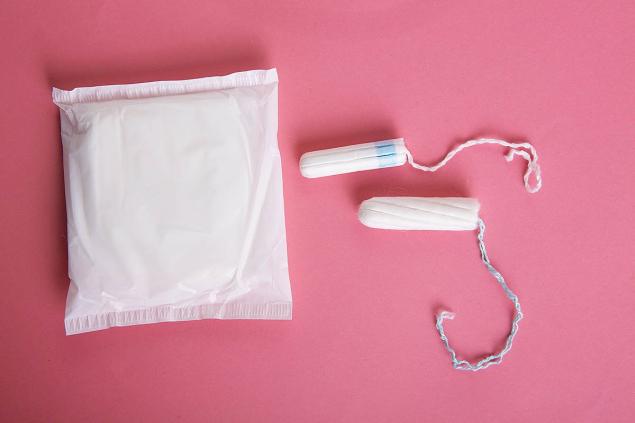195
Hygienic habits of the inhabitants of the USSR, which amaze foreigners, a real shock
Years pass, morals change, some Soviet habits become obsolete, and you do not even want to remember them. But basic hygiene rules Those days remained popular and widespread until now. Although foreigners just think about such "executions" becomes bad. What's wrong? We understand further in the article.

Basic rules of hygiene Visiting a bath or sauna. Public baths are a meeting place for all generations and estates. Soviet citizens had nothing to be ashamed of. But to avoid embarrassment, there were separate male and female days. Especially appreciated were experienced bathers - people who deftly operated brooms, causing wild delight (or squeal) in a person who decided to steam.
While foreign citizens rinsed their bodies under the shower every day, representatives of Soviet society specifically laundered themselves once a week. And no one thought that for health reasons soaring in the bath could not be all in a row.

The sauna, who came to the rescue of the bath, preserved her methods: washed, warmed up, whipped with a broom, refreshed. And the foreign guests wondered: why mock yourself? And if someone accidentally managed to drag a European into the steam room, he escaped from there in the second minute.
Where did you read it? In the toilet! Before the advent of toilet paper in the public domain, Soviet citizens were engaged in involuntary self-education and were known to be very well-read, using old books and newspapers instead. There were drawbacks in this: printed dyes had a dangerous lead, which could provoke health problems.
175284
If the article or story was very interesting, the bathroom was occupied longer than usual. Therefore, in communal apartments there were queues from those wishing to retire, since the bathroom was only one for several families.
And in hostels and hotels, the toilet room was one for the entire floor. There were constantly lined up lines at the entrance to the shower, so foreign students and foreign guests were provided with separate rooms with a built-in bathroom.

Another problem is public toilets, or rather, their absence in post-Soviet countries, which has not been solved to this day.
It's tricky! The variety of cosmetics in the USSR was not taken care of, Soviet citizens learned about shampoos and gels much later than everyone else, and smelled equally strange: the aroma of berries resembling the smell of strawberries, and forest freshness with shades of needles.

Soviet women used corn flour in the bath instead of scrub. The product perfectly cleansed and nourished the skin, so the older generation of beauties uses it now, alternating with coffee grounds.
When Western fashionistas styled their hair with varnish, Soviet women experimented with foam and sugar syrup, and a perm was made with red-hot wire to form a hairstyle and look no worse. However, the hair after such procedures was very broken, and the floor in the bath was just strewn with them.
Dryed hair is also extreme: over a gas stove or in the oven. Above the head of the woman built a visor from the newspaper, keeping warm air.

Women’s personal hygiene was generally preferred to remain silent both in the West and in the USSR. Only foreign ladies have long used special pads and tampons on critical days. And Soviet beauties for a long time washed flaps from fabric for the purpose of their reusable use. Massively on sale there were personal hygiene products after the collapse of the Union. Today’s women and girls can’t imagine their lives without these tools.
What Soviet hygiene rules still seem strange to you?

Basic rules of hygiene Visiting a bath or sauna. Public baths are a meeting place for all generations and estates. Soviet citizens had nothing to be ashamed of. But to avoid embarrassment, there were separate male and female days. Especially appreciated were experienced bathers - people who deftly operated brooms, causing wild delight (or squeal) in a person who decided to steam.
While foreign citizens rinsed their bodies under the shower every day, representatives of Soviet society specifically laundered themselves once a week. And no one thought that for health reasons soaring in the bath could not be all in a row.

The sauna, who came to the rescue of the bath, preserved her methods: washed, warmed up, whipped with a broom, refreshed. And the foreign guests wondered: why mock yourself? And if someone accidentally managed to drag a European into the steam room, he escaped from there in the second minute.
Where did you read it? In the toilet! Before the advent of toilet paper in the public domain, Soviet citizens were engaged in involuntary self-education and were known to be very well-read, using old books and newspapers instead. There were drawbacks in this: printed dyes had a dangerous lead, which could provoke health problems.
175284
If the article or story was very interesting, the bathroom was occupied longer than usual. Therefore, in communal apartments there were queues from those wishing to retire, since the bathroom was only one for several families.
And in hostels and hotels, the toilet room was one for the entire floor. There were constantly lined up lines at the entrance to the shower, so foreign students and foreign guests were provided with separate rooms with a built-in bathroom.

Another problem is public toilets, or rather, their absence in post-Soviet countries, which has not been solved to this day.
It's tricky! The variety of cosmetics in the USSR was not taken care of, Soviet citizens learned about shampoos and gels much later than everyone else, and smelled equally strange: the aroma of berries resembling the smell of strawberries, and forest freshness with shades of needles.

Soviet women used corn flour in the bath instead of scrub. The product perfectly cleansed and nourished the skin, so the older generation of beauties uses it now, alternating with coffee grounds.
When Western fashionistas styled their hair with varnish, Soviet women experimented with foam and sugar syrup, and a perm was made with red-hot wire to form a hairstyle and look no worse. However, the hair after such procedures was very broken, and the floor in the bath was just strewn with them.
Dryed hair is also extreme: over a gas stove or in the oven. Above the head of the woman built a visor from the newspaper, keeping warm air.

Women’s personal hygiene was generally preferred to remain silent both in the West and in the USSR. Only foreign ladies have long used special pads and tampons on critical days. And Soviet beauties for a long time washed flaps from fabric for the purpose of their reusable use. Massively on sale there were personal hygiene products after the collapse of the Union. Today’s women and girls can’t imagine their lives without these tools.
What Soviet hygiene rules still seem strange to you?
Astropsychologist warns amorous citizens and urges not to fall in love with Gemini
Unsuccessful dresses that will turn even the brightest beauty into an aunt, you do not need to wear this.























